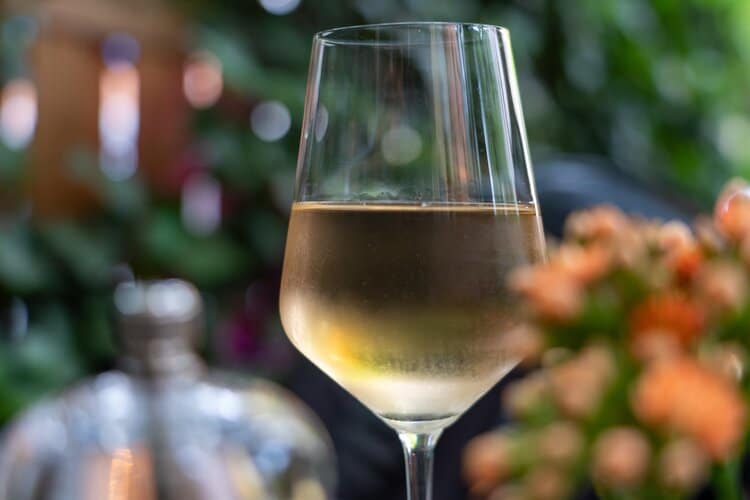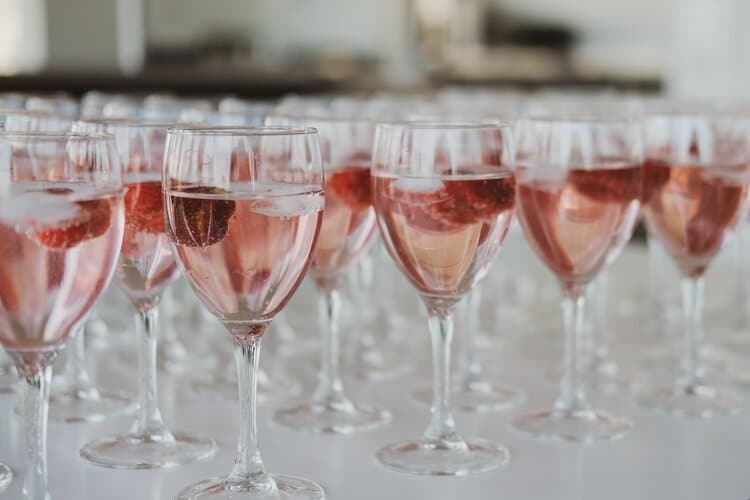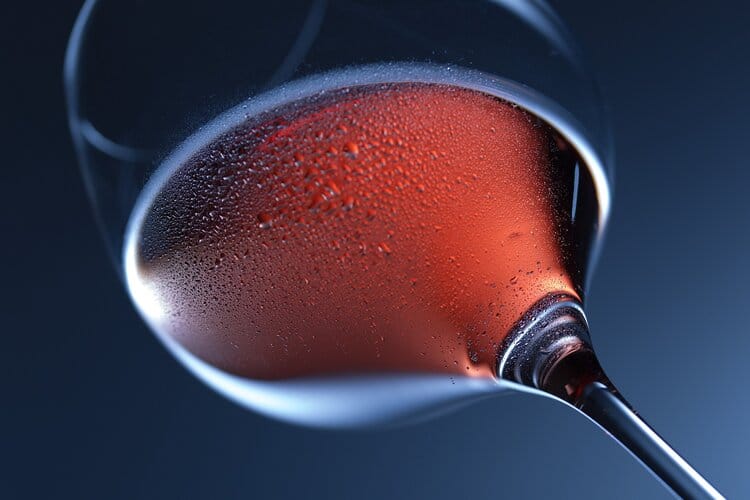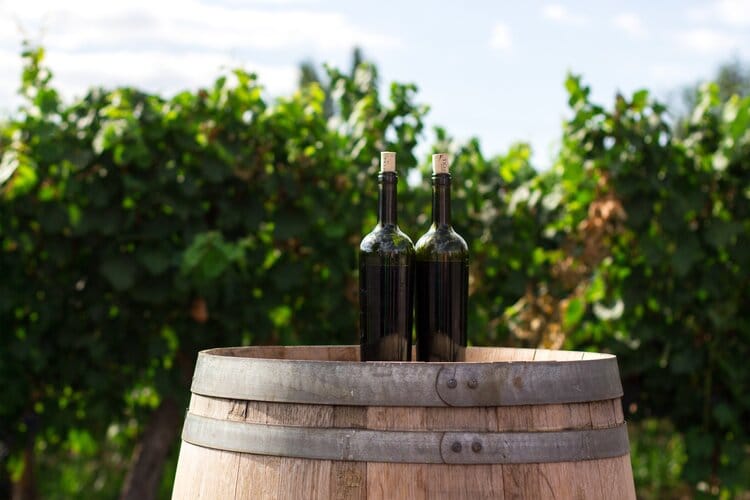Wine has been one of the most commonly consumed alcoholic beverages throughout human history. Different wines have formed their own cultures. Even considered sacred in some religions, it has also inspired many popular culture references. There are also plenty of stories about wine in Turkey. In this article, we will examine wine from beginning to end; This article is a detailed guide for both wine lovers and those who are considering drinking wine but feel that they cannot make the right choices.
What is Wine?
Wine is an alcoholic beverage made with fermented grape juice.
Technically, any fruit can be used for wine (i.e. apples, cranberries, plums, etc.), but if the product’s label says just “wine,” then that wine is simply made from grapes.
The difference between two popular beverages, wine and beer, is that brewing involves fermented grains. Simply put, wine is made from fruit and beer is made from grains. There are exceptions to this, but in general terms, this is the difference between wine and beer.
Let’s Take a Look at the Importance of Wine in History
Wine has been the popular beverage of mankind for thousands of years. Our natural fondness for this beverage is due to its wonderful taste, nutritional properties and especially its psychotropic (intoxicating) effects.
Of all the alcoholic beverages, none has had such an impact on society. The wine trade between cultures opened channels for the spread of religious and philosophical ideas across Europe.
Wine is used in the Catholic Church today as a substitute for the blood of Christ, an indication of the key role the beverage has played over the years. Centuries ago, owning a wine industry was a civilizational threshold for civilizations, as only developed societies could support an advanced and competitive wine industry. It is often said that Western society laid its foundations on wine.
When was the first wine produced?
Although there is no definite information on this subject, there are rumors in an old Persian tale that the inventor of wine was a woman. According to this ancient tale, the inventor of wine is a princess who has fallen out of favor with the king, and she is so ashamed of this situation that she ate table grapes that spoiled in the jar on her table to end her life.
But the suicide of this unfortunate princess did not turn out as she expected; The princess was stunned, drunk and passed out. When the princess wakes up, she realizes that all the troubles in her life seem to have passed. The princess continued to eat the grapes in the jar and her mood changed so much that she regained the King’s favor.
Although this is a pleasant story, the accidental discovery of wine probably happened several times in different regions, but what is certain is that the invention of wine was purely luck.
First Wine Remnants
The first sign of the wine we all know and love dates back to sixty-million-year-old fossils; This means that our pre-human ancestors may have understood that older grapes would be more appealing. We can observe this in our animal friends, who prefer more mature fruits today.
The oldest wine remains were discovered in the area of Haci Firuz Tepe in the Zagros Mountains in northern Iran. Wine dates back to the Neolithic period (8500-4000 BC). Carbon dating confirmed that the wine was between 5400 and 5000 BC.
Although no older wine has been found, the art of winemaking is thought to have begun shortly after 6000 BC. This is believed to be the history of one of humanity’s most important creations, as the people of these regions were able to establish permanent settlements through the domestication of animals and plants.
This was a much more stable life situation than the nomadic lifestyle most people were currently using. This stability allowed people to try new cuisines and beverages. Some of our favorite dishes and drinks that are still today, including beer and of course wine, were developed during this time period.
The Spread of Modern Wine from Europe to the World
Wine was first brought to South America by the Spanish, and this was purely for religious reasons. Catholics considered wine the main tool of almost all their rituals. Wine came to North America through colonists fleeing religious persecution to start a new life in the new world.
Initially, wine was avoided by the American public, as it was considered too European and unwelcome in the newly formed United States. Even if they were keen on making wine, they had little time to do so as they were busy taming the new world in which they lived.
The popularity of wine hasn’t grown much, and the U.S. public still remains largely beer drinkers. Only 30% of the population in America has become aware of the wine drinking experience. 75% of the wine that these 30% drink is produced in America. There is a somewhat isolationist approach to wine in America. Australia has had similar problems with wine production before, as it is a new country and has a wilder nature that needs to be tamed.
The only improvement made by these countries is the way they make oak barrels for aging fine wine. French oak was thought to be best for imparting its flavor to wine. This was mainly because American oaks (like oak from many other countries) were used to make barrels, but the wood’s influence on wine was enormous.
It was later discovered that the problem was not the wood, but the way the barrels were made. Because Americans were more used to making whiskey barrels, they would dry their wood in an oven, unlike Europeans who let their wood dry for at least 24 months before using it.
Another difference was that the Americans cut the wood into laths, whereas the Europeans split the wood. These differences in technique used immediately made a significant difference in the wine produced. After this discovery, America and Australia were finally able to start producing quality wine.
What Substance and How Are Wines Made?
Picking fruit from the vineyard to take to the winery is the first step in the winemaking process. However, many different factors here determine the choice of these fruits. First of all, it is very important to choose the ideal collection date. Winemakers regularly taste fruit from vineyards throughout the year to assess acidity and sugar levels. When the appropriate time is decided, the collecting teams go to the vine to collect the fruits.
Harvesting can be done in one of two ways: by hand or by machine. The former takes longer, but allows for greater quality control and separation in the vineyard. The latter is usually done in larger vineyards that have more space to cover.
Next Step, Crushing the Grapes
This step differs depending on whether white, rosé or orange or red wines are made. First of all, if the winemaker wishes, the grape fruits are removed from the stems using a machine (destemmer), followed by the process of crushing the fruit.
For white wines, the fruit is usually crushed and pressed; this means that the juice is quickly removed from contact with the grape skins. After being compressed, the juice is then transported to a tank to settle, after which it is separated from the sediment.
For orange and red wines, the fruit (with or without stems) is crushed and left on the skins for a period of time to soften. This is what gives red and orange wines their color and texture.
Fermentation
Simply put, in winemaking, fermentation is what turns grapes into alcohol.
White wine is made by fermenting grape juice only, while red wine is made using the whole grape, grape skin and other parts. This is what gives red wine such high tannins (tannic acid).
To ferment wine, winemakers add yeast to grape juice. These yeasts convert the grapes’ natural sugars into ethanol and carbon dioxide (a by-product that is released into the atmosphere and is not important to wine).
But fermentation doesn’t just create alcohol. This entire process also helps shape the flavor, aroma and appearance of the wine.
When winemakers use the fermentation process to turn their grapes into wine, they also produce a host of other complex compounds that help make wine.
How Are Wines Aged?
Several factors are taken into account when developing a wine’s aging process. First, the decision of the substance in which the wine will be stored is the big factor. Most winemakers will choose to age their wines in steel, cement or oak, but terracotta or clay, glass and other containers are also possible options.
Aged wine in steel creates a non-oxidative environment, meaning the wines are not exposed to oxygen. Using steel tends to preserve fresh fruit flavors in the wine and no external tannins or flavors from wood are added to the drink. On the other hand, aging wine with oak creates an oxidative environment, which means the wine comes into contact with oxygen. This allows the wine to develop different levels of texture and flavor. When fresh oak is used, flavors of vanilla, nutmeg and/or dill can often be tasted in the resulting wine.
Filtering Wine
After aging the output, some winemakers choose to refine and/or filter their wines to remove any residue from the juice. Filtration is done with a porous material, while refining requires adding some type of substance (usually bentonite, egg white, gelatin) to the wine and allowing the sediment to coagulate. The residue remaining in the wine is absolutely harmless and completely suitable for drinking. Winemakers who choose to refine and/or filter their wines often do these steps purely for aesthetic reasons.
Final Step: Bottling
After the wines are aged, the wine is finally bottled and ready to be packaged. Some winemakers prefer to age their wine separately in the bottle for a certain period of time before putting it on the market. After the wines are bottled, they are labeled and sealed with corks, screw caps or other caps and are now on their way to distributors for sale or distribution.
Are Wines Good for Your Health?
Studies show that drinking an occasional glass of red wine is good for your health.
Wine provides you with antioxidants, can promote longevity, and help protect against heart disease and harmful inflammation, along with all these benefits.
Interestingly, red wine likely has higher antioxidant levels than white wine. Still, more research is still needed to better understand which types of wine offer the most benefits.
In addition, red wine is touted as being beneficial in lowering blood pressure, but the only red wine that definitely gives this effect is non-alcoholic. In 2012, a study was published that compared how gin, red wine, and non-alcoholic red wine affected blood pressure in 67 men at high risk of cardiovascular disease.
The results concluded that non-alcoholic red wine significantly reduced blood pressure levels in men compared to other groups.
However, it is important to remember that drinking wine is not healthy for everyone and is not necessary. You can get the same benefits with a healthy eating habit.
What Are the Types of Wine, How Are Wines Differentiated?
If you’re a newbie to the world of wine, you may find the large number of wine varieties completely confusing. Among the literally thousands of wines out there, how do you know what’s what and how can you choose a good wine to try for the first time?
Simply put, wine is the fermented juice of a wine grape. Wine grapes are very different from the grapes we buy at the grocery store: they are small, sweet, thick-skinned and contain many seeds. There are two types of grapes from which wine is made: white grapes (which are actually green in color) and black grapes (which are actually red in colour), and within these grape varieties there are hundreds of different varieties that are used to make thousands of wines and blends.
Many other factors affect the character of a wine, such as the region where the wine is extracted, tannins, sweetness, acidity and aromas, so for now we will only examine the six main wine types and their sub-genres for you.
Wine can be broadly divided into several main types:
Red wines are defined by their dark fruit flavors and tannins that make them the perfect accompaniment to meals. Ageing with oak plays a role in many red wines.
White wines tend to be more sour and refreshing than reds, with aromatic notes such as flowers, citrus, and orchard fruits. White wines are generally lighter in body and alcohol.
Rosé, sparkling and fortified wines: These wine types are often paired with an important condition; rosé wine in the summer, sparkling wine for special events and fortified wine after a hearty meal.
What You Need to Know About Red Wine
Red wines are made from grapes with black skins, the juice of which is colorless. When grapes are pressed at the winery, the grape skins are mixed with juice (must) to create a reddish-purple beverage.
Tannins: Grape skins also contain tannins, compounds responsible for the bitterness and quality of red wine. The tannins in red wine act as preservatives; this means that higher tannin red wines can generally be aged longer than white wines (without tannin) or lower tannin red wines. As it ages, the tannins and anthocyanins in red wine drop down and form a sediment at the bottom of the bottle. This residue can be removed by decantation. Decantation: The name given to the process of aerating the wine after it is first opened.
Ageing: Many red wines are aged in oak barrels to add flavors such as cinnamon, cocoa, chocolate and vanilla to the wine. Ageing in oak barrels also softens the tannin structure of red wine, making the wine taste smoother.
Taste: The flavors and aromas of red wine vary depending on the aging method and the grape varieties it contains. Fruit flavors in red wines include red fruits (such as strawberries, raspberries, red cherries, red plums, pomegranates, cranberries), black berries (such as black cherries, black plums, blackberries, currants) and blue fruits (blueberries). Warmer climates produce wines with more mature, firmer fruit quality. Earthy aromas such as potting soil and wet leaves are common in Eurasia and Africa.
Varieties: Red wines can also be different wines made from a single red grape variety. These wines are named after the grape (more common in the United States, South America, Australia, and New World wine regions such as New Zealand and South Africa) or by the title of the wine, such as Burgundy. Some grapes, such as the French syrah, known as shiraz in Australia, have different names depending on where they are grown.
Six Different Types of Red Wines to Know
Bordeaux: Many red wines are blends of different grapes. The most famous red blend is the French wine Bordeaux, which can be made from cabernet sauvignon, cabernet franc, merlot, and a few other varieties. Because Bordeaux is a protected title, similar blends made in California’s Napa Valley, for example, are not allowed to be called Bordeaux and are instead called “meritage”.
Chianti: Some red wines, such as the Chianti of Central Italy, are identified globally with a grape (in this case, sangiovese), but according to the rules of holding that title, this wine may have only a small proportion of other grapes blended.
Rioja: Rioja is a blended Spanish wine made mostly from the tempranillo grape, the third most planted wine grape in the world. Rioja is made by mixing the tempranillo grape with mazuelo (also known as carignan), garnacha, and graciano; all this serves to create the flavor and texture of this dry and woody wine. Rioja wines are classified according to the time they have been aged, rather than based on the vineyard area as in Burgundy.
Syrah (Shiraz): Syrah is a type of red wine grape that is often used to make a monolithic wine. Syrah is known as a deep, meaty, dark fruit flavored and easily drinkable wine.
Primitivo(Zinfandel): This type of wine is produced almost exclusively in southern Italy under the name primitivo, while the rest of the world calls this grape and wine “zinfandel”. Primitivo wines are known for their high alcohol content, fruity, raisin and black cherry notes.
Beaujolais: It is a light bodied red wine with high acidity and low tannin. The wine has aromas of red fruit such as raspberry, red cherry, red currant and cranberry. High-quality Cru Beaujolais, with notes of cork, forest earth and smoky, is sometimes compared to Old World Pinot Noir.
What You Need to Know About White Wine
White wines are made from grapes with green skins, the juice of which is also colorless. For white wines, the grape skins are removed from the must before fermentation. The acidity and aroma are more important in white wines because they lack the tannins that come in contact with the skin of red wines.
Ageing: White wines are more likely to be aged in stainless steel barrels, a technique that allows them to retain their fresh aroma. Ageing in oak can add vanilla, spice, coconut and caramel flavors to white wines.
Taste: White wines can range in taste from acrid to sweet. Classic dry white wines include Italian pinot grigio, French muscadet or Austrian Grüner Veltliner. Some producers make dry wine and sweet wine from the same grapes. In Germany, riesling grapes are harvested at different maturity levels to make different types of wine from the same vineyard.
Varieties: White wines are a variety of wines, mostly made from a particular grape variety. Like red wines, they are often named according to the variety in the Americas and where they are made in Eurasia and Africa. White wines made from grape blends are more common in certain regions, including Spain, Bordeaux, and France’s southern Rhône region.
Aromas: Some white wine grapes are considered aromatic, meaning they have strong fruit and floral aromas. Semi-aromatic grapes include sauvignon blanc and albariño from Spain. Neutral grapes such as Chardonnay have less pronounced aromas, but are good choices for winemaking processes such as oak aging or sparkling winemaking. Many white wines also have stone fruit flavors such as peach, nectarine, apricot, apple and pear.
Climate: The flavors and aromas of white wines vary according to the grape and the climate they are in. Warmer climates tend to produce more mature tropical fruit flavors such as guava, passionfruit, pineapple, and melon. Citrus flavors such as lemon, lime, grapefruit, and orange predominate in cool-climate wine regions.
Four Different Types of White Wines to Know
Pinot Grigio: Pinot grigio is a grape known by different names in different countries, often used to make light, refreshing white wines. For example, in Italy it is known as pinot grigio, but the French call it pinot gris. Pinot grigio is generally light, crunchy and astringent. It is the second most popular white wine in the USA after Chardonnay. Pinot grigio is generally a medium to light bodied, dry and acidic wine. But depending on the region where the grapes are grown, some pinot grigios can have full to medium bodies and have both sweet and citrus flavors.
Sauvignon Blanc: Sauvignon blanc is one of the world’s most popular white wine grapes, prized for its unique citrus, fruity flavor and invigorating high acidity. The flavor of Sauvignon Blanc varies depending on where it’s grown, from the grassy and grapefruity flavors of France and Italy to the tangy tropical fruit and jalapeño flavors of New Zealand.
Riesling: A white grape variety. Riesling is an aromatic white grape that creates white wine with fruity, flowery aromas. Common features of Riesling wine include aromas of citrus, stone fruit, white flowers and petroleum; It is light bodied and has high acidity.
Chardonnay: Chardonnay is the most popular white wine in the world. The green skin grape is grown in almost all major wine regions in the world. The Chardonnay grape is naturally neutral and can quickly acquire a variety of different characteristics depending on where it is grown and how it ripens. The result is a sipable, low-acid, easy-to-taste wine.
What You Need to Know About Rose Wine
Rosé wines are made from red grapes, but the grape skins are removed from the wort after a short maceration period (usually less than 24 hours). The rinds give the wine its pink color, but not much tannin. Rosé wines may have flavors common to red wines such as strawberry, cherry, and raspberry, as well as more typical white wine flavors such as citrus and tropical fruits.
What You Need to Know About Sparkling Wine
Sparkling wines can be white, rosé or red. They can be made from any grape variety, depending on the naming rules of the region in which they are made. Sparkling wines may be wines made from a single grape variety or may be made from a blend of grapes. The sugar content in sparkling wines varies from dry (like brut nature Champagne) to sweet (like Moscato d’Asti). Most sparkling wines contain a few grams of sugar to offset their high acidity.
Two of the best known sparkling wines are Champagne and prosecco.
Champagne can be a variety of wine (made from a variety such as chardonnay, pinot noir, or pinot meunier) or a blended wine made from a blend of permitted grapes. It is made by the traditional method, also called the champenoise method, which involves primary alcoholic fermentation followed by a secondary fermentation in the bottle to produce its bubbles.
A type of wine always made from the glera grape, Prosecco is made using the Charmat method, where secondary fermentation takes place in a large closed tank before the wine is bottled.
What You Need to Know About Fortified Wines
Fortified wines (called vin de liqeur in Europe) are made by adding a type of alcohol made from distilled grapes to fully or partially fermented wine. Most fortified wines are sweet, with the exception of some types of sherry. Fortified wines include Port, Madeira, Marsala, Sherry, Macvin and the Vin Doux Naturals of Southern France. Fortified wines such as vermouth are sometimes aromatized with herbs. Fortified wines have a higher alcohol content than other wine types.
Wine Drinking Tactics for New Gourmets
Navigating the vast world of wine drinking can be daunting for new wine drinkers. Wine enthusiasts and wine connoisseurs are notorious for crushing beginners with technical terms and spooky rules.
Remember that all you really need to drink wine properly is curiosity and an eagerness to try new things. Still, it never hurts to have a few handy tips and techniques to enhance your wine tasting experience. With that in mind, consider this your guide to drinking wine like a pro.
Finding the Right Temperature
Forget everything you’ve been told about just serving red wine at room temperature or chilling white wine hours before opening it. While these are often referred to as predetermined rules, they are more general rules that do not require strict adherence.
However, wine temperature should not be ignored as it affects the taste of the wine. When served too cold, the distinctive flavors of white wine may be diminished, while red wines served too hot can taste extremely acidic. Serving wine at the right temperature brings out its full flavor, texture and character.
White wines, sparkling wines and rosés are ideal at temperatures between 45-50 degrees depending on the type.
Heavier white wines like Chardonnay or lighter reds like Pinot Noir should be served between 55-60 degrees.
Generally speaking, red wine is best served between 60-65 degrees.
You can use a wine thermometer around the bottle to check the temperature. You can submerge the bottle in a bucket of ice water to cool it. You can put the bottle in a bowl of warm water to warm it up.
Choosing the Right Glass
The type of glass you choose can have a significant impact on your wine drinking experience.
The most important feature in wine glass selection is the surface diameter of the top of the glass. It should be large enough for you to breathe in the aromas of a wine.
If you can’t smell the wine you drink, you can’t taste it. To test this theory, try pinching your nose the next time you eat something spicy. You will find that you have lost some of the burning sensation in your mouth. The same goes for wine tasting.
Wider rimmed wine glasses allow more aroma to enter your nose. Glasses with a smaller circumference reinforce these aromas. Sommeliers, who dedicate their lives to smelling and tasting wine, can often tell you details such as the type of grape, where it was grown, and when it was bottled.
Red Wine Glasses
Red wine glasses should have a larger bowl that allows the wine to come into contact with oxygen easily. This allows the wine to breathe and enhances its overall flavor.
White Wine Glasses
White wine glasses have a U-shaped bowl to keep the wine colder for longer. Compared to red wines, these wines need less oxygen to release their aromatics.
Sauvignon Blanc is served in a smaller glass (with a slightly tapering rim). In contrast, Chardonnay is best served in a large white wine glass, which allows plenty of oxygen to enhance the flavors.
The Chardonnay wine glass is often considered the largest and widest glass associated with white wine, and the shape of the glass – with a narrow rim – allows the wine to flow towards the middle of the tongue, allowing drinkers to experience a balance of fruitiness and acidity.
Chardonnay should be served six degrees hotter than most white wines; this is another reason why the glass is so wide compared to a typical white wine glass which should keep the wine much cooler.
Rose Wine Glasses
Since rosé should be served cold, the perfect glass shape for this type of wine depends on the mix. A glass with a long stem and a curved lip is ideal for serving young rosé wines, on the contrary, a squat bowl-shaped glass or stemless wine glass will accentuate the aroma of a well-aged rosé.
Sparkling Wine Glasses
Sparkling wines and champagne are traditionally served in a corrugated wine glass with a short-medium stem and a long, narrow bowl. This shape is considered ideal for anything bubbly, as it retains froth and flavor.
Spin the Wine in the Glass
Rotation plays an important role in wine drinking as it allows the wine to oxygenate and complex aromatics to emerge. This is actually the reason why wine tastes better when aerated for a few minutes. Your glass must be large enough to swirl efficiently.
Forget the Assumptions About Ageing
While there is a common belief that the older the wine, the better, this is not always the case. While most white wines are best opened and consumed within a year or two after bottling, red wines should be opened within 3-5 years.
A few wines that age well require high acidity and aroma compounds, and high tannins, especially in the case of red wine. These wines can be aged for 10-20 years or more. Wines such as Burgundy, Barolo and Bordeaux are renowned for aging well. However, most wines are intended to be enjoyed at a young age – only a small fraction of wine types are produced to evolve with aging.
What Are the Top 10 Wine Brands?
Turkey is one of the first countries that come to mind when it comes to wine and has been one of the best wine producers throughout history. Wine is produced in many regions, especially in the Aegean and Marmara, and high-class quality wines meet the consumers.
A good wine selection always increases the enjoyment, so it is important to be aware of the local brands when you go to any liquor store. We have compiled a nice list of top ten brands, most of which are local brands.
1) Pamukkale Wines
Pamukkale wines has been one of the most important choices in the sector since 1962. The brand name is easily understood from Denizli, where it is grown, and the company has vineyards in the Güney district.
Offering a wide range of prices to the consumers, Pamukkale is also known for making the white Mulier, one of the favorites of most wine lovers.
2) Turasan Wine
Turasan, on the other hand, is grown in the Cappadocia region, which has been one of the important centers of winemaking for centuries, and can be easily found in large chain markets.
3)Vinolus Wine
Vinolus, an award-winning wine brand with world-renowned quality, is a wine brand originating in Kayseri.
4) Alamos Malbec
Alamos is one of the most appreciated wines with its velvety feel and lush notes of cherry and blackberry. It’s no surprise that it’s the best-selling Argentine Malbec in the world.
5) Kayra Wine
Origin: Elazig-Thrace
6) Lycian Wine
Origin: Antalya
7) Doluca Wines
Origin: Uşak, Adapazari, Tekirdag, Denizli and Ankara
8) Kavaklidere Wines
Origin: Ankara
9) Resist Wines
Origin: Tokat
10) Suvla Wine
Origin: Canakkale, Gallipoli

























